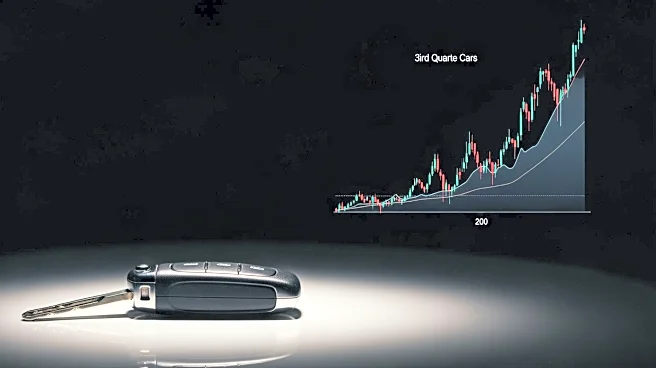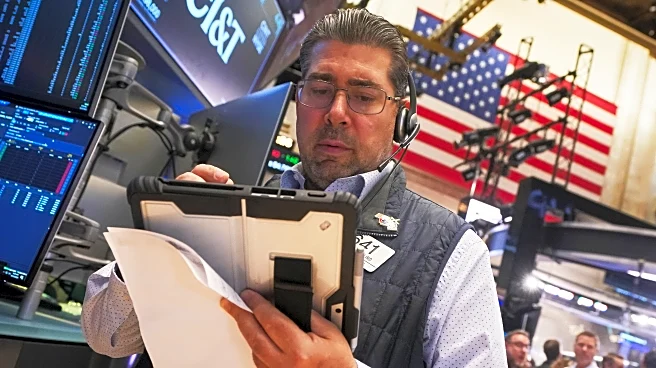What's Happening?
Volvo Cars, owned by China's Geely Holding, reported a significant increase in its third-quarter operating income, reaching 6.4 billion Swedish kronor ($680.4 million), surpassing analysts' expectations.
This performance was largely attributed to an ongoing 18 billion kronor cost-saving program and certain one-off items. The company's EBIT margin improved to 7.4% from 6.2% in the previous year. As a result, Volvo Cars' stock price surged by as much as 41% during trading, marking its best intraday gain since the company began trading four years ago. The company also noted a return to slight sales growth in September and is preparing for the January launch of the EX60, a new electric vehicle model.
Why It's Important?
The strong financial performance and subsequent stock surge highlight Volvo Cars' successful cost management and strategic positioning in the competitive automotive market. The company's ability to exceed profit expectations and improve its EBIT margin demonstrates effective operational efficiency and resilience in a challenging economic environment. The positive market reaction reflects investor confidence in Volvo's strategic initiatives, including its focus on electric vehicles, which are crucial for future growth. However, the company remains cautious about the short-term outlook due to macroeconomic challenges, such as price competition and U.S. import tariffs, which could impact future performance.
What's Next?
Volvo Cars anticipates further benefits from its cost-cutting measures in the coming months, which could continue to bolster its financial performance. The upcoming launch of the EX60 is expected to strengthen Volvo's position in the electric vehicle market, potentially driving sales growth. However, the company will need to navigate ongoing macroeconomic challenges, including competitive pricing pressures and trade tariffs, which could affect its profitability and market dynamics. Stakeholders will be closely monitoring how Volvo adapts to these challenges while pursuing its strategic goals.













